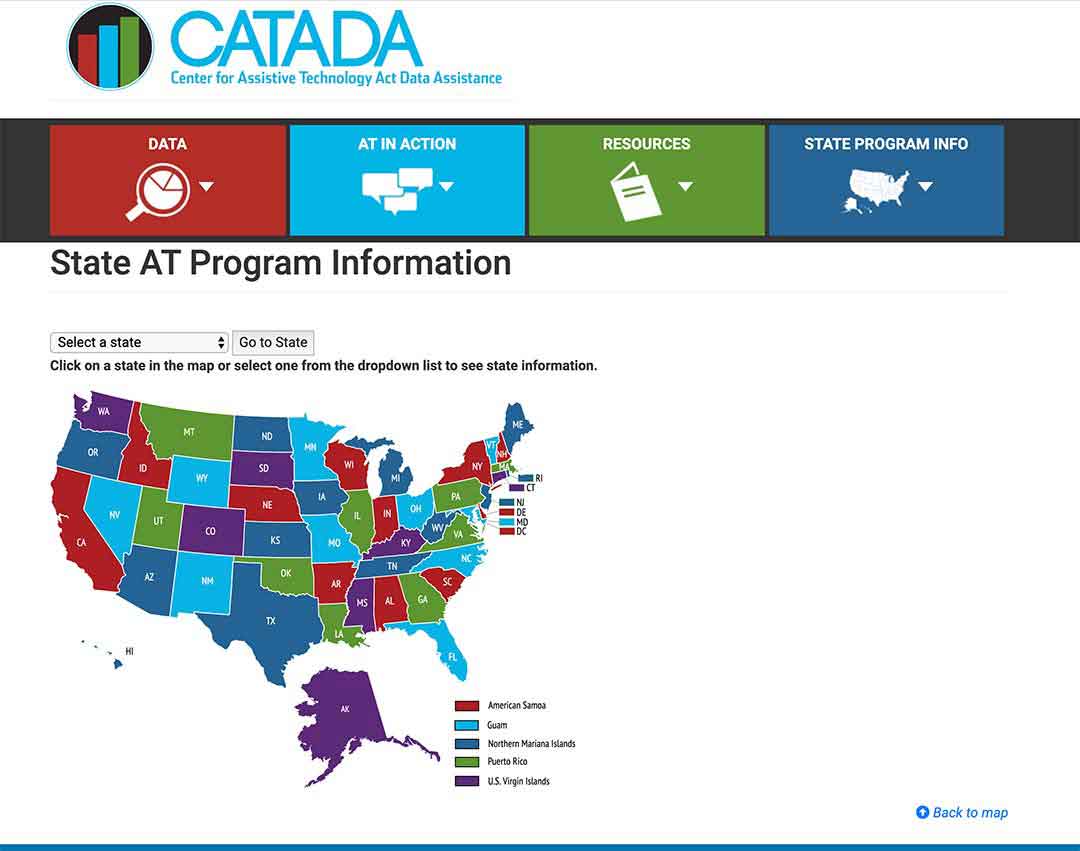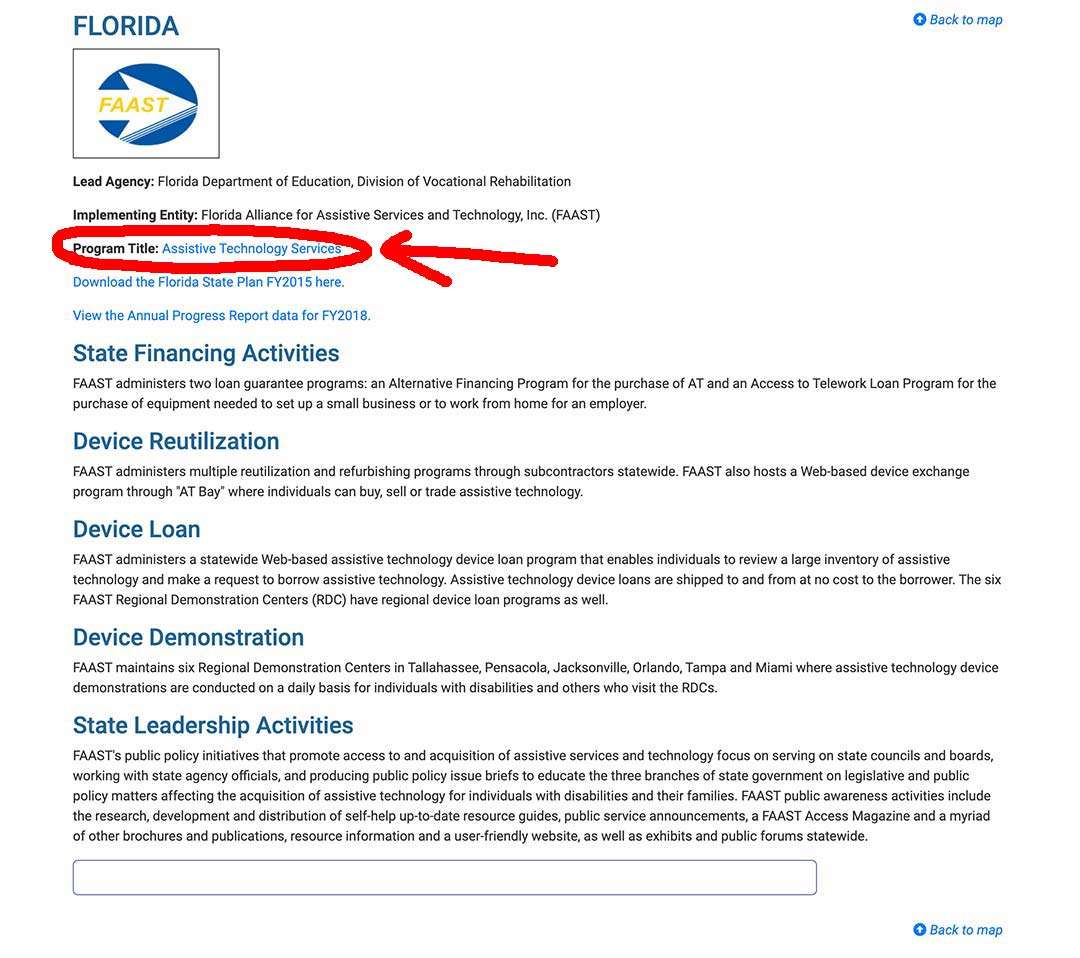Does Medicare cover walking boots? Original Medicare Part B and Medicare Advantage plans cover ankle-foot orthosis (commonly referred to as “walking boots”) in certain cases, as long as they are rigid, or semi-rigid.
Contents Overview & Quicklinks
In what cases do Medicare part b cover walkers ?
How often does Medicare cover a walker ?
Does Medicare cover knee walkers ?
Does Medicare cover walking canes ?
Does Medicare cover ice machines ?
What equipment does Medicare cover ?
List of durable medical equipment typically covered by Medicare
List of durable medical equipment not typically covered by Medicare
How do you qualify for Medicare Part B covered DME ?
How do you, or your loved one, proceed once you have the signed prescription for your DME ?
How to get the best possible coverage and not over-pay ?
Do Medicare Advantage Plans cover walking boots ?
Get free assistance with understanding Medicare
Does Medicaid cover walking boots ?
With certain programs and waivers, DME for home use may be easier to obtain
Find the HCBS programs, waivers and 1915 waivers in your state
What are the steps to purchasing DME with Medicaid and state waivers, and HCBS programs ?
If your income is a little too high to qualify for Medicaid ?
In what cases do Medicare Part B cover walking boots ?
Walking boots, or ankle-foot orthosis, are orthopedic devices used for the stabilization of the foot and ankle for broken bones, severe sprains, tendon and ligament tears, surgeries and orthopedic conditions.
As I said, Medicare Part B will partially cover “walking boots” under the benefit for Orthotics or Braces, but there are certain conditions to this, and they will only cover them if –
- the “walking boot” is rigid or semi-rigid
- the “walking boots” are being used to immobilize the ankle/foot following orthopedic surgery or for an orthopedic condition
As long as you have a prescription from a Medicare-enrolled physician which states that it is “medically necessary”, you will typically be covered.
If the walking boots are being used to relieve pressure, especially on the sole of the foot, or are for foot ulcers, the walking boot will not be covered.
Medicare has coverage for Therapeutic shoes for those with diabetes.
Does Medicare cover walkers ?
Walkers are one of the most commonly used pieces of equipment by the elderly, and a very necessary to many.
My Mom has used one ever since her hip replacement, as her balance is sometimes a little off.
At 90, Mom can be rather stiff when she gets up at night, and the frame by the bed just helps her to have something to hold onto as she straightens up into a standing position.
Walkers come in quite a few varieties, from ones without wheels to rollators.
All walkers are covered by Medicare as long as you get a prescription from a Medicare-enrolled physician saying that it is medically necessary.
Walkers just like the “walking boot” are part of what Medicare calls Durable Medical Equipment or DME’s – a little more about that later though.
How often does Medicare cover for a walker ?
Typically, Medicare will replace any equipment that it covers, and which is worn out, once every five years from the date that it was received.
So, you can replace your walker with Medicare Part B every five years, unless it has been lost, stolen or damaged beyond repair.
Equipment which has been covered by Medicare which is lost, stolen or damaged beyond repair, may be replaced – Medicare will of course require proof of the initial coverage, and purchase.
Source: Medicare coverage of Durable Medical Equipment and Other Devices, CENTERS for MEDICARE & MEDICAID SERVICES. You can read the whole document here.
The passage is on Page 13 of the PDF. You can also download the document from the link above.
Does Medicare cover Knee walkers ?
Despite the popularity of knee walkers, or knee scooters, as they are also commonly called, these items are not covered by Medicare.
The knee walkers are a popular piece of equipment with those who have just had an ankle surgery, as they allow you to completely take the weight off the ankle, but Medicare considers it to be more of a comfort item, and it doesn’t fill their criteria for being covered due to this.
I guess Medicare feels a pair of crutches will do the job just as well !
If you don’t have any kind of other insurance to cover a knee walker, it is still a lot cheaper to rent one as compared to buying one.
Does Medicare cover walking canes ?
Finally, to our most humble piece of equipment, the walking cane.
The walking cane is covered by Medicare Part B, so long as you have the prescription from a Medicare-enrolled physician which states that it is “medically necessary”.
The walking cane will be covered if –
(The following information is taken directly from CMS.gov and can be found here.)
1.The beneficiary has a mobility limitation that significantly impairs his/her ability to participate in one or more mobility-related activities of daily living (MRADL) in the home.
The MRADLs to be considered in this and all other statements in this policy are toileting, feeding, dressing, grooming, and bathing performed in customary locations in the home.
A mobility limitation is one that:
a.Prevents the beneficiary from accomplishing the MRADL entirely, or,
b.Places the beneficiary at reasonably determined heightened risk of morbidity or mortality secondary to the attempts to perform an MRADL; or,
c.Prevents the beneficiary from completing the MRADL within a reasonable time frame;
And,
2.The beneficiary is able to safely use the cane or crutch; and,
3.The functional mobility deficit can be sufficiently resolved by use of a cane or crutch.
If all of the criteria are not met, the cane or crutch will be denied as not reasonable and necessary.
Does Medicare cover ice machines ?
Anyone who has torn tendons, ligaments, cartilage, or just muscles, can testify to the wonderful relief of cold therapy, and how an ice machine (cold therapy unit, ice therapy machine or cooling therapy devices) can make things much more bearable.
So you will be terribly disappointed to learn that Medicare considers that ice packs and cold therapy devices are not “reasonable and necessary”and that they do not fall into the category of equipment which Medicare covers as they are considered to be comfort items.
If you would like to read more about it more, the following passage is from Blue Cross Blue Shield of Rhode Island –
“Cooling Devices used in the Home and Outpatient Setting”
Medicare “not reasonable and necessary:” Medicare indicates cooling therapy items do not fit the definition of reasonable and necessary and are therefore not be covered. Medicare defines services/items “not reasonable and necessary” as items not “reasonable and necessary for the diagnosis or treatment of illness or injury or to improve the functioning of a malformed body member.”
Services denied as not reasonable and medically necessary, under section 1862(a)(1) of the Social Security Act, are subject to the Limitation of Liability (Advance Beneficiary Notice) provision. Thus, to be held liable for denied charge(s), the beneficiary must be given appropriate written advance notice of the likelihood of non-coverage and agree to pay for services.
You can find the source document here.
Here is another passage on cooling devices from –
Premera, Blue Cross – Cooling Devices Used in Outpatient Setting – May 2019
Medicare National Coverage
While there is no national coverage decision for Medicare, cooling devices are addressed in Durable Medical Equipment Resource Center (DMERC) policy.
Last reviewed in 2004, the policy reads as follows: A device in which ice water is put in a reservoir and then circulated through a pad by means of gravity is not considered durable medical equipment (DME). Other devices (not all-inclusive) which are also not considered to be DME are: single use packs which generate cold temperature by a chemical reaction; packs which contain gel or other material which can be repeatedly frozen; simple containers into which ice water can be placed. All of these types of devices must be coded A9270 if claims are submitted. Code E0218 describes a device which has an electric pump that circulates cold water through a pad.25
You can read the whole article here.
Medicare does cover certain cold and heat therapies on both an inpatient, or outpatient basis.
The treatment again has to be prescribed as “medically necessary” by a Medicare enrolled physician, or by a therapist and co-signed by a physician.
What equipment does Medicare cover ?
Medicare Part B will cover certain durable medical equipment, for use in the home, when it is prescribed as “medically necessary”.
Durable medical equipment has to be able to withstand repeated use over a sustained period of time.
Typically, Medicare Part B covers durable medical equipment items such as –
- wheelchairs
- walkers
- crutches
- bed trapeze bars
- bedside commodes
- patient lifts
There are specific guidelines about the qualifying diagnoses for each piece of equipment.
Medicare will not cover disposable supplies such as –
- gloves
- fabric dressings
- band-aids
If you have the Medicare Home Health Care Benefit, certain supplies will be covered, or if when used in conjunction with a specific item of durable medical equipment which Medicare is covering.
While Original Medicare Part B covers equipment for use in the home, Original Medicare Part A (hospital care) covers all aspects of short term treatment in skilled nursing facilities, including DME.
For Medicare to cover an item of durable medical equipment, it has to fulfill the following criteria –
- the item must be able to withstand repeated use over a sustained period of time – durable
- the item must be used for a medical reason only – not for comfort
- it is an item that is of use to someone who is actually sick, and of little use to a person who is well
- it is an item which is primarily for use in the home
- the item must be expected to last at least 3 years
List of durable medical equipment covered by Medicare
If you don’t find the equipment you are looking for in my list of Medicare covered DME’s below, you can use this link to Medicare.gov
Air-Fluidized Bed
Alternating Pressure Pads and Mattresses
Audible/visible Signal Pacemaker Monitor
Pressure reducing beds, mattresses, and mattress overlays used to prevent bed sores
Bead Bed
Bed Side Rails
Bed Trapeze – covered if your loved one is confined to their bed and needs one to change position
Blood sugar monitors
Blood sugar (glucose) test strips
Canes (however, white canes for the blind aren’t covered)
Commode chairs
Continuous passive motion (CPM) machines
Continuous Positive Pressure Airway Devices, Accessories and Therapy
Crutches
Cushion Lift Power Seat
Defibrillators
Diabetic Strips
Digital Electronic Pacemaker
Electric Hospital beds
Gel Flotation Pads and Mattresses
Glucose Control Solutions
Heat Lamps
Hospital beds
Hydraulic Lift
Infusion pumps and supplies (when necessary to administer certain drugs)
IPPB Machines
Iron Lung
Lymphedema Pumps
Manual wheelchairs and power mobility devices (power wheelchairs or scooters needed for use inside the home)
Mattress
Medical Oxygen
Mobile Geriatric Chair
Motorized Wheelchairs
Muscle Stimulators
Nebulizers and some nebulizer medications (if reasonable and necessary)
Oxygen equipment and accessories
Patient lifts (a medical device used to lift you from a bed or wheelchair)
Oxygen Tents
Patient Lifts
Percussors
Postural Drainage Boards
Quad-Canes
Respirators
Rolling Chairs
Safety Roller
Seat Lift
Self-Contained Pacemaker Monitor
Sleep apnea and Continuous Positive Airway Pressure (CPAP) devices and accessories
Sitz Bath
Steam Packs
Suction pumps
Traction equipment
Ultraviolet Cabinet
Urinals (autoclavable hospital type)
Vaporizers
Ventilators
Walkers
Whirlpool Bath Equipment – if your loved one is home bound and the pool is medically needed. If your loved one isn’t home bound, Medicare will cover the cost of treatments in a hospital.
Prosthetic and Orthotic Items
Orthopedic shoes only when they’re a necessary part of a leg brace
Arm, leg, back, and neck braces (orthotics), as long as you go to a supplier that’s enrolled in Medicare
Artificial limbs and eyes
Breast prostheses (including a surgical bra) after a mastectomy
Ostomy bags and certain related supplies
Urological supplies
Therapeutic shoes or inserts for people with diabetes who have severe diabetic foot disease.
List of durable medical equipment not covered by Medicare
Adult Diapers
Air Cleaners
Air Conditioners
Alcohol Swabs
Augmentative Communication Device
Bathroom Aids
Bathtub Lifts
Bathtub Seats
Bed Bath
Bed Boards
Bed Exit Alarms
Bed Sensor Pads
Bed Lifter
Beds – Lounge
Bed Wedges
Blood Glucose Analyzers
Braille Teaching Texts
Caregiver Paging Systems
Catheters – except those which are used for permanent medical conditions where the catheter is considered as a prosthetic
Chair Exit Alarms
Chair Sensor Pads
Communicator
Contact Lenses – Medicare helps pay for corrective lenses if you have cataract surgery to implant an intraocular lens
Dehumidifiers
Dentures
Diathermy Machines
Disposable Bed Protectors
Disposable Sheets
Door Exit Alarms
Easygrip Scissors
Elastic Stockings
Electrical Wound Stimulation
Electrostatic Machines
Elevators
Emesis Basins
Esophageal Dilators
Exercise Machines
Exit Alarm Mat
Eye Glasses – Medicare helps pay for corrective lenses if you have cataract surgery to implant an intraocular lens.
Fall Alarms
Fans
Fabric Supports
Fomentation Device
Grab Bars
Grabbers
Gauze
Hearing Aids
Heat and Massage Foam Cushion Pad
Heating and Cooling Plants
Home Modifications
Humidifiers – not room humidifiers
Incontinence Pads
Injectors (hypodermic jet pressure powered devices for Insulin injection)
Irrigating Kits
Insulin Pens
Massage Equipment
Motion Sensors
Motion Sensor Exit Systems with Pagers
Needles
Oscillating Beds
Over bed Tables
Paraffin Bath Units (if not Portable)
Parallel Bars
Portable Room Heaters
Portable Whirlpool Pumps
Preset Portable Oxygen Units
Pressure Leotards
Pressure Stockings
Pulse Tachometer
Pull String Alarms
Raised Toilet Seats
Ramps
Reading Machines
Reflectance Colorimeters
Sauna Baths
Special TV Close Caption
Speech Teaching Machines
Stair Lifts
Standing Table
Support Hose
Surgical Face Masks
Surgical Leggings
Syringes
Telephone Alert Systems
Television Assistive Listening Devices
Telephone Arms
Toilet Seats
Treadmill Exercisers
Walk in Bathtubs
Wheelchair Lifts
Whirlpool Pumps
White Canes
Wigs
How do you qualify for Medicare covered DME ?
To find a local Medicare supplier, check this link at Medicare.gov.
For you, or a loved one, to qualify for DME’s “for use in the home” with Medicare coverage, you –
- have to be enrolled in Medicare Part B
- have your Medicare-enrolled doctor give you a signed prescription which states that the equipment is a “medically necessary” following the Medicare criteria
- have to acquire the equipment through a Medicare enrolled supplier
For Medicare coverage, “living at home” is defined as –
- living in your own home
- living in the family home
- living in the community, such as assisted living
In regard to nursing homes and hospitals, they are covered under Medicare Part A – hospital treatment. As such, they cannot qualify as a home for Medicare Part B.
The coverage for DME’s is different for skilled nursing facilities, and they are provided for up to 100 days by the nursing facility itself.
How do you, or your loved one, proceed once you have the signed prescription for your DME ?
With your order/prescription, you or loved one can go to a Medicare-enrolled DME supplier and pick out the item of equipment from the range they have.
Medicare will generally only cover the basic examples of each type of equipment, and the range available will typically be pretty limited. There will be more forms to fill out with the supplier for the coverage etc.
As long as you have the order/prescription from a Medicare enrolled doctor, Medicare Part B will cover 80% of the Medicare-approved price for the DME with the Medicare-enrolled supplier.
You, or your loved one, will then pay the Medicare 20% co-payment of the Medicare-approved price of the DME, as long as you used a Medicare-enrolled “participating” supplier who accepts assignment.
If not, you may owe more ! I will explain after the next section.
You will also need to pay your Medicare deductible, if it hasn’t already been met for the year in question.
Medicare may purchase or rent DME’s
Typically, with all but the least important purchases, Medicare rents equipment from their DME Medicare-enrolled suppliers on a monthly basis.
As long as the DME is rented from a Medicare-enrolled “participating” supplier who accepts assignment, you, or your loved one, will pay a monthly co-payment of 20% of the Medicare-approved rental price.
How to get the best possible coverage and not over-pay ?
You need to follow all the steps of the process with Medicare to the letter, so that you get the best coverage for your DME.
You, or your loved one, must use a Medicare enrolled “participating” supplier who accepts “assignment” if you are to avoid paying any surplus.
In short, this means the DME is being bought at the Medicare-approved price, and that the co-payment and deductible are all you will pay.
What is the risk ?
There are two types of Medicare approved suppliers –
- Medicare Suppliers
- Medicare “Participating” Suppliers
There exist agreements between Medicare and Medicare “Participating” Suppliers, that the Medicare “Participating” Suppliers will accept what is called “assignment” – this means that they cannot charge more than the Medicare-approved price for DME’s.
Suppliers who are not “Participating” can charge as much as 15% more than the Medicare-approved price for equipment (with the exception of some states, which limit in law the amount the supplier can add on).
Even so, Medicare will only pay the supplier their Medicare-approved price, which leaves you, or your loved one, to pay the difference in price, as well as the co-payment and annual deductible (if it applies).
Does Medicare Advantage cover walking boots ?
If you have a Medicare Advantage Plan, you are covered for everything that Medicare Parts A and B cover, and often a little more.
As regards the process, you will need to contact your provider as they will have their own rules, and also their own network of doctors and DME suppliers whom you must use if you are to be covered.
Get free assistance with understanding Medicare
SHIP – State Health Insurance Assistance Programs –
There is free guidance about Medicare, Medicaid and Medigap available from your SHIP over the phone, all you have to do is call.
I have a quick guide showing how to find your local SHIP, which you can find here – “Free Help Understanding Medicare And Medicaid ? Here’s Where You Get It”.
Does Medicaid cover walking boots ?
Medicaid is a very different animal from Medicare – it is funded both on a federal level and a state level.
There are basic guidelines for Medicaid, which as long as the states stay within, they have a lot of latitude in what they can do.
The result is a lot of different state and Medicaid programs for in home care which have been developed – literally hundreds of different “programs” and “waivers” across the US, and with wide variance from state to state.
Medicaid and state programs for care services in the home
Programs called “Home and Community Based Services” (HCBS), “Waivers” or “1915 Waivers”, exist to care for people in their homes and in the community. The goals of the programs and waivers are to help the participants to maintain their independence, living in their own homes.
Those eligible for these programs and waivers are low income families, the elderly and the disabled.
To find out if you, or your loved one, are eligible, you will contact your State Medicaid Office.
Your local Area Agencies on Aging should be able to help you find out as well.
To see more about HCBS programs, waivers and 1915 waivers, click on the link below for medicaid.gov –
https://www.medicaid.gov/medicaid/hcbs/authorities/index.html
These programs and waivers will pay for “home medical equipment”, and will often cover 100% of the cost.
The term “home”, for the in home care programs and waivers, is used to mean that the beneficiary is living in –
- their own home
- their family home
- a group home
- an assisted living facility
- a custodial care facility
With certain programs and waivers, DME for home use may be easier to obtain
Some HCBS programs and waivers run a system called “Consumer Direction” or “Self Direction”
Where this is the case, the participant is given a specific budget which is theirs to help them maintain their independence in their home.
To assist each participant in managing the funds across their living needs, they will be appointed a financial planner.
If Medical or safety equipment, such as toilet safety frames, bathtub lifts, grab bars, not covered as DME’s by Medicare, is judged “medically necessary” and vital to the participant maintaining their independence in their home, it can be purchased on some of these programs, or waivers, as long as it is within the allotted budget.
To find out more about Medicaid Self Direction, click here.
Helping transition the elderly from care institutions back into their homes
Money follows the person – this is a Medicaid based program which has been set up to help elderly adults make the transition from nursing facilities back into their own homes.
Assisted living can count as their own home in this case.
If there is medical equipment which is needed for the move to be made possible, the program will purchase it for the participants.
The range of what may be considered a DME, here, can be much broader than with Medicare.
Find the HCBS programs, waivers and 1915 waivers in your state
To find HCBS Waivers, 1915 Waivers, HCBS Programs and the Money Follows The Person Programs for seniors in your state, you can check my guide listing what programs are available in each state. It also listed all the PACE Programs – Programs of All-inclusive Care for the Elderly -for care in the home – “Medicaid Home and Community Based Services Waivers and Programs For Seniors Listed By State”.
What are the steps to purchasing DME with Medicaid and state, waivers and HCBS programs ?
Step 1
– the beneficiary has to get the doctor, or therapist, to provide a medical justification letter, which states that the equipment is medically necessary
Step 2
-the beneficiary has to find a DME supplier who is Medicaid approved, and to pass on to them the medical justification letter
Step 3
– the DME supplier then fills out a Prior Approval Application for Medicaid
Step 4
– the document is then sent to the Medicaid State Office for approval or denial
Step 5
– if the beneficiary is unsuccessful they will be notified as to the reasons why, and told how to appeal the decision
Step 6
– if approved, the beneficiary will receive the DME
If your income is a little too high to qualify for Medicaid
Spend Down
Devised by Medicaid, Spend Down programs reduce a person’s income, or asset + income level so that they can qualify for Medicaid coverage.
Certain medical expenses, loan and debt repayments can be deducted from a person’s income and assets so that the value of their income and assets drops below the limit for Medicaid, and they will then qualify for coverage.
If you want to find out more about Spend Down, I have an article in which I explain who qualifies for Spend Down, the expenses that are deductible, and how you know if you qualify – What is Spend Down ?
To find your State Medicaid State Agency
If you prefer to contact your state Medicaid Agency and ask the questions directly, you can do that here.
Step 1 – Once you have clicked the link to Medicaid.gov, just look over to the right on the website page, and you will see the section I have outlined in the image below

Step 2 – select your state and click on the button they have marked “GO” – it will take you to your State medicaid Agency, and you will be able to get all the contact info and make calls 0r do emails to get all the help you need.

State Funding Assistance
Assistive Technology Programs
In the US, there is a government grant called the State Assistive Technology Grant, which is given to each state.
Each state has to set up a State Assistive Technology Program, which is designed to improve access to assistive devices in the home.
The focus of these projects is primarily the elderly and the disabled.
These State Assistive Technology Programs will typically have –
- an online equipment exchange for any state residents to post used equipment they wish to donate, exchange or sell, and also for those who are looking for equipment to post their searches
- a main website which lists the programs activities, coordinates their services, and where you can ask about how to get access to free equipment
- reuse and recycling programs run by the state project, or by groups partnering with the project, to provide free, or extremely low cost equipment for the disabled and the elderly
- loan closets usually figure as part of the state projects, and these can be either long term or short term
Assistive Technology Programs will also have registers of those who need help, and will contact them when specific equipment becomes available.
To find out more, look on your State Assistive Technology Program website.
To see what projects are in your state, click here.
Follow the steps below to see the projects in your state
Step 1/
Pick your state on the map or the drop-down menu, and click on “Go to state”
– I chose Florida for this example

Step 2/
Click on the link “Program Title” – for my example, I outlined it in red.

Step 3/
The State AT Program website will come up, and you can register, or use their contact info.

State Financial Assistance Programs
Some states, but sadly not all, have non-Medicaid programs which give financial assistance to the elderly and the disabled so that they may remain living independently in their own homes.
Known as State Financial Assistance Programs, these programs will pay for assistive devices, safety equipment, durable medical equipment, as well as home modifications.
The programs give grants, loans, or a combination of the two.
Your local Area Agency on Aging should be able to advise you on financial assistance programs for the elderly, and if there is one in your state.
I’m Gareth, the author and owner of Looking After Mom and Dad.com
I have been a caregiver for over 10 yrs and share all my tips here.

